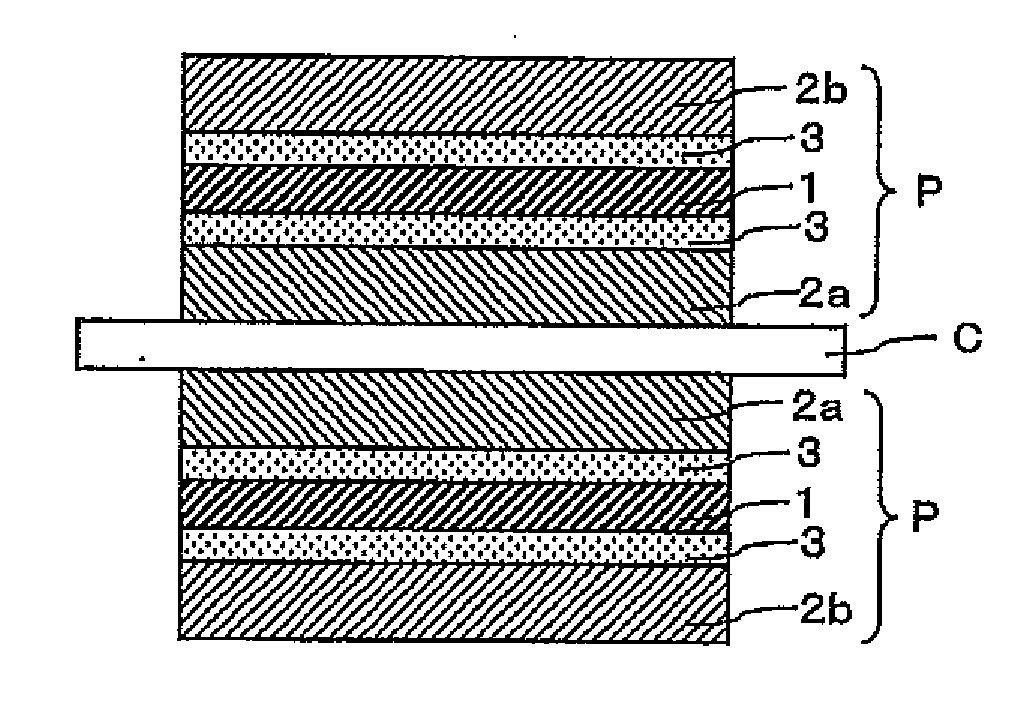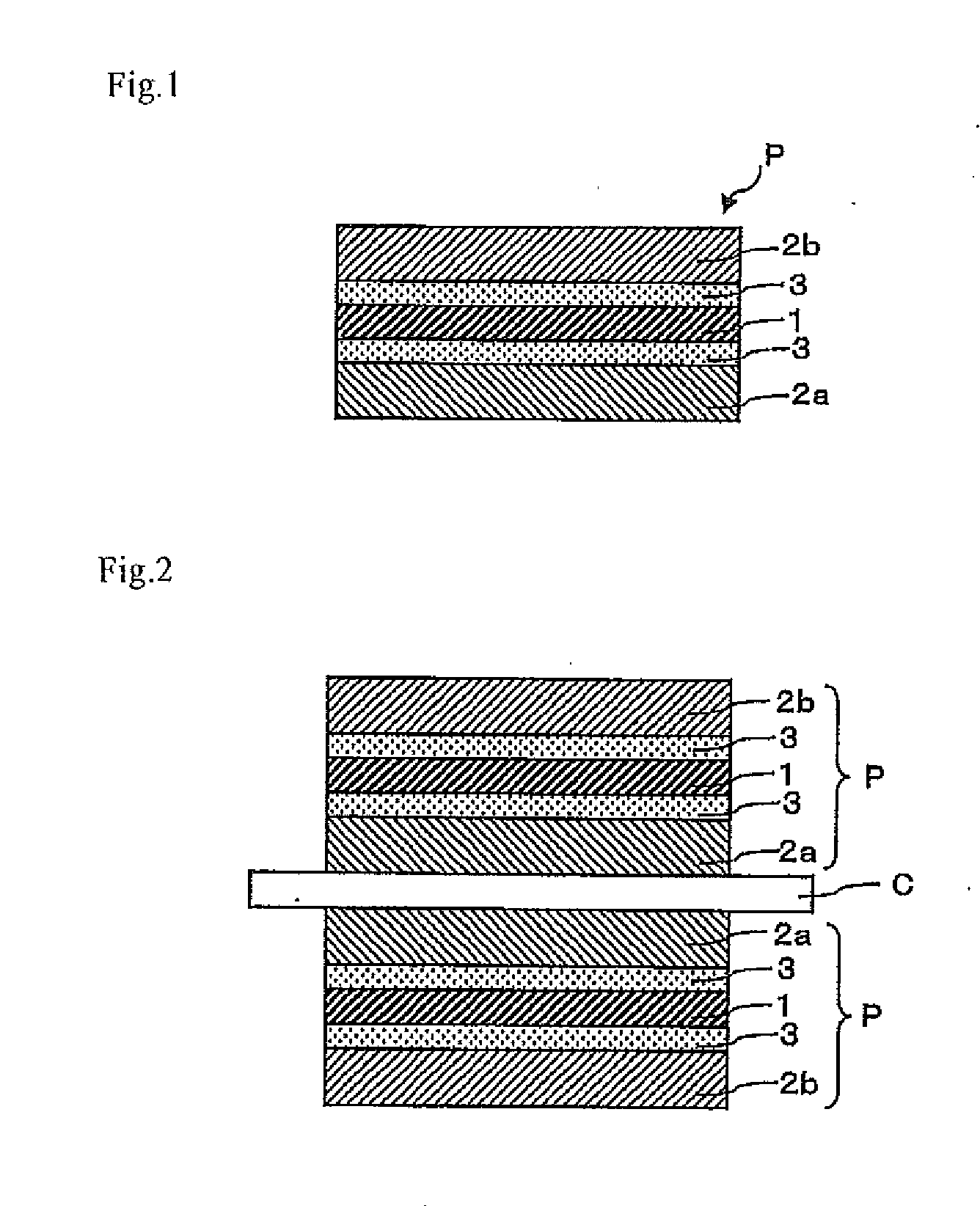Polarizing plate, manufacturing method thereof, optical film and image display
a technology of optical film and polarizing plate, which is applied in the direction of polarizing elements, non-linear optics, instruments, etc., can solve the problems of reducing the yield of polarizing plate and reducing the productivity of polarizing plate, affecting the yield of polarizing plate and reducing the production cost. , to achieve the effect of reducing the production cost and reducing the generation of knick defects
- Summary
- Abstract
- Description
- Claims
- Application Information
AI Technical Summary
Benefits of technology
Problems solved by technology
Method used
Image
Examples
example 1
Preparation of Polarizing Plate
[0175]Adhesive 1 was applied to one side of transparent protective film 1 so that the adhesive layer could have a thickness of 80 nm after drying. Adhesive 1 was applied to one side of transparent protective film 2 so that the adhesive layer could have a thickness of 80 nm after drying. The adhesive was applied at a temperature of 23° C. 30 minutes after the preparation of the adhesive. The adhesive-carrying transparent protective films 1 and 2 were bonded to both sides of the polarizer at a temperature of 23° C. with a roller and then dried at 55° C. for 6 minutes, so that a polarizing plate was obtained.
PUM
| Property | Measurement | Unit |
|---|---|---|
| thickness direction retardation | aaaaa | aaaaa |
| thickness direction retardation | aaaaa | aaaaa |
| particle size | aaaaa | aaaaa |
Abstract
Description
Claims
Application Information
 Login to View More
Login to View More - R&D
- Intellectual Property
- Life Sciences
- Materials
- Tech Scout
- Unparalleled Data Quality
- Higher Quality Content
- 60% Fewer Hallucinations
Browse by: Latest US Patents, China's latest patents, Technical Efficacy Thesaurus, Application Domain, Technology Topic, Popular Technical Reports.
© 2025 PatSnap. All rights reserved.Legal|Privacy policy|Modern Slavery Act Transparency Statement|Sitemap|About US| Contact US: help@patsnap.com



